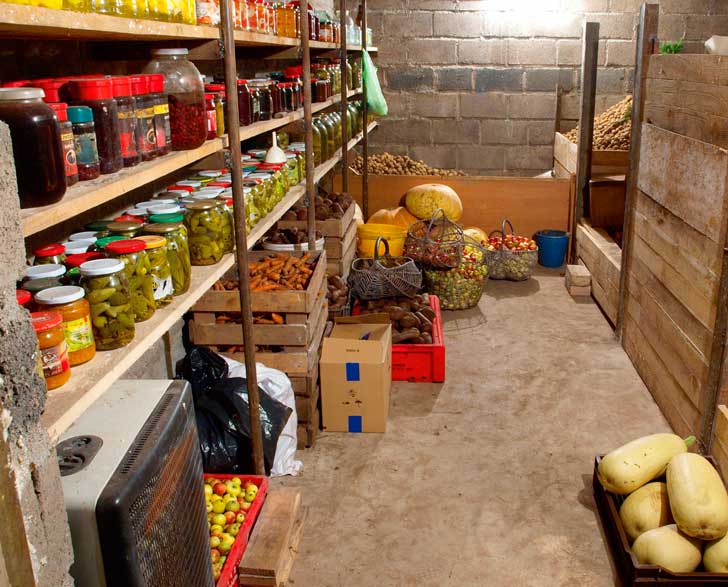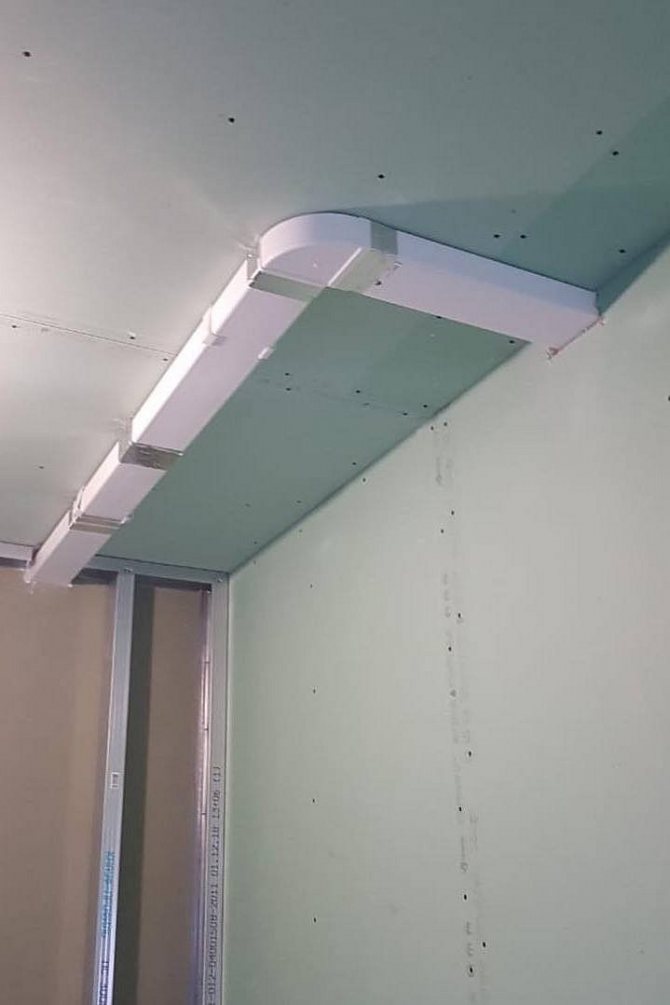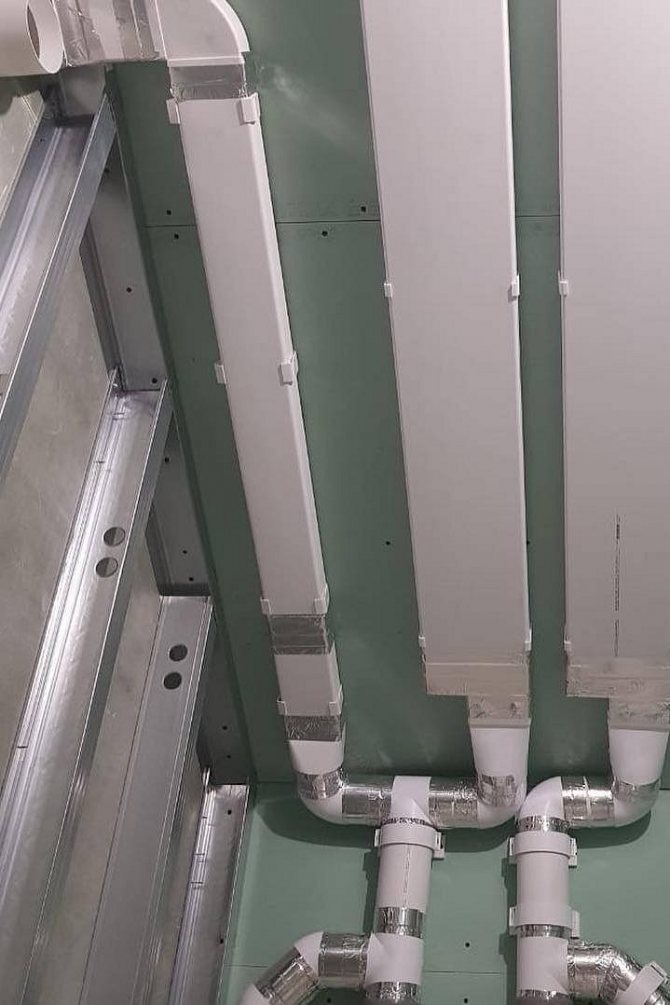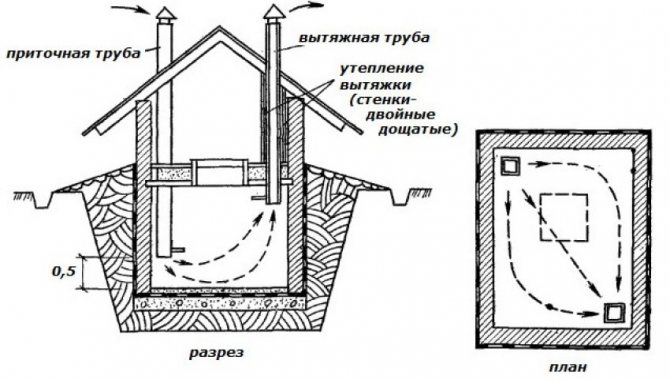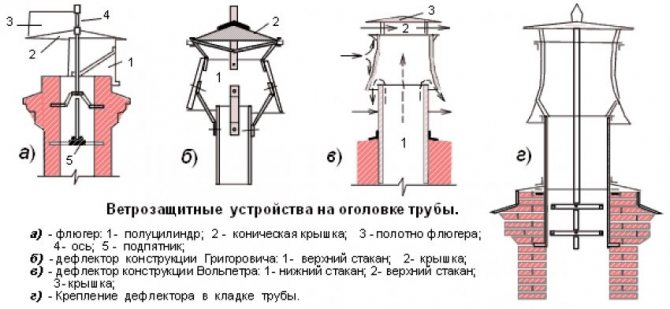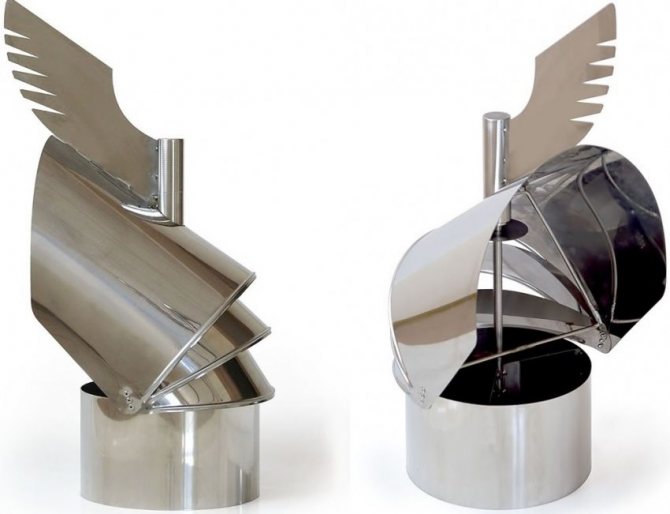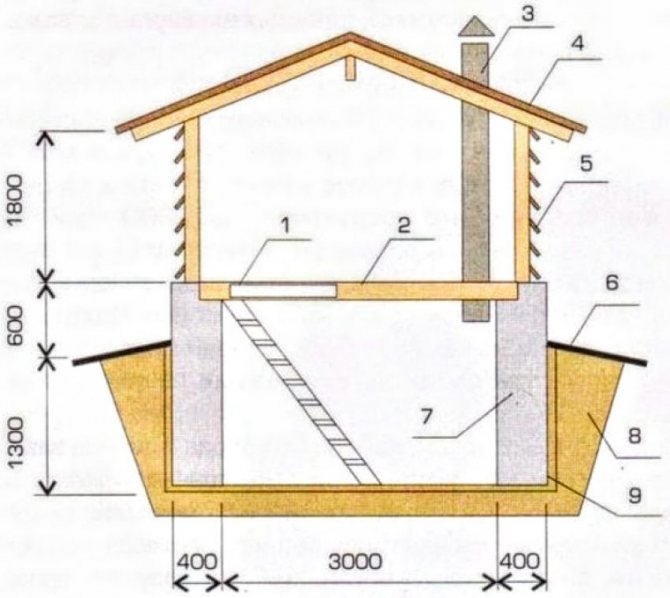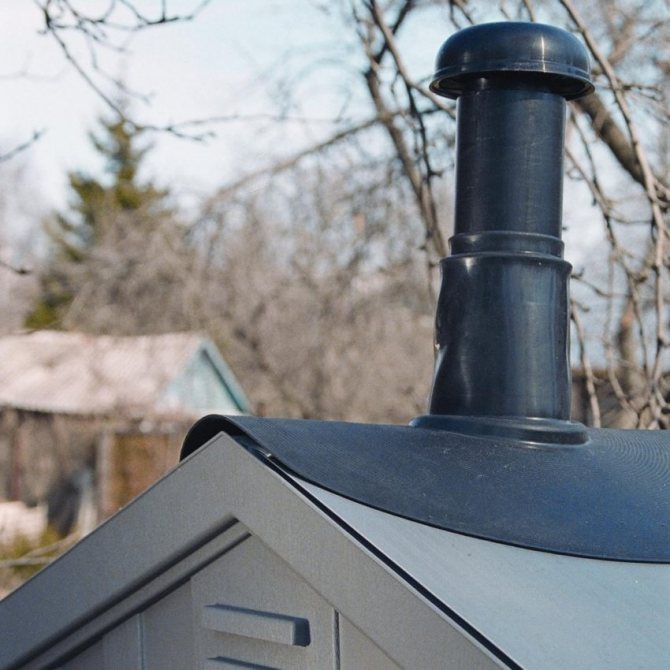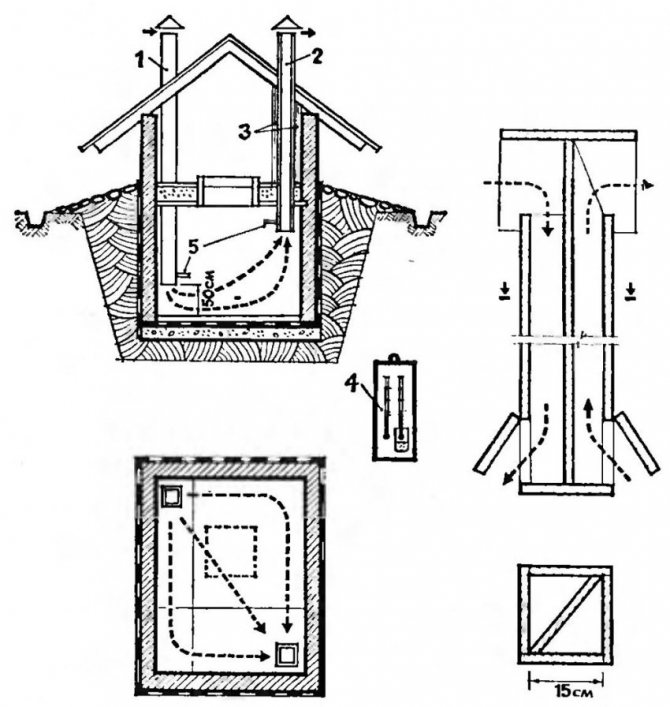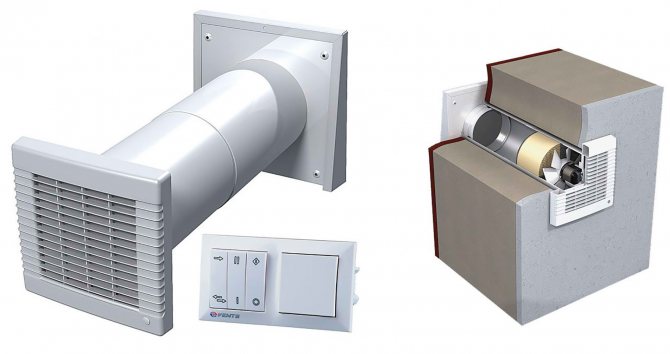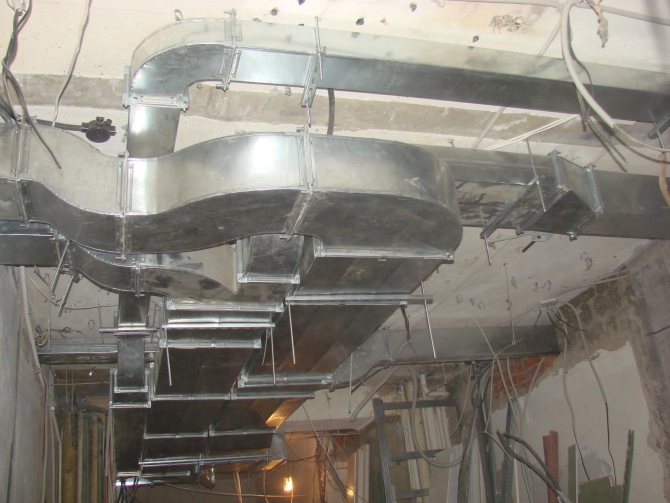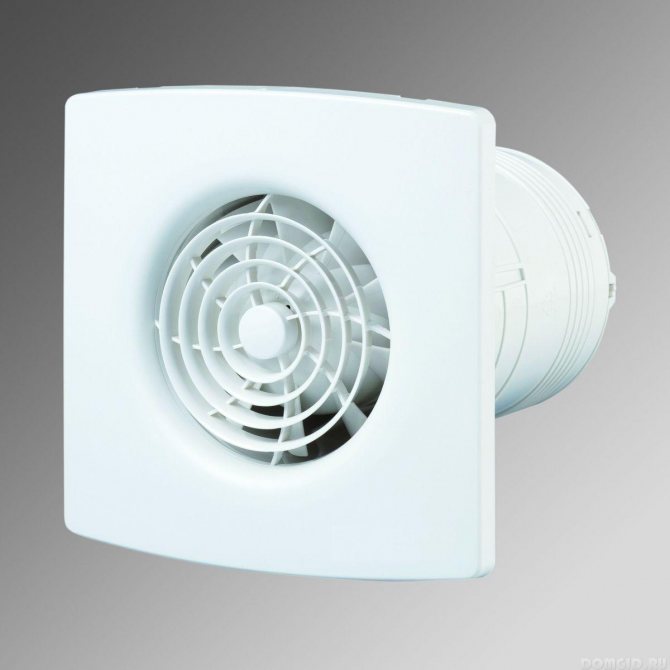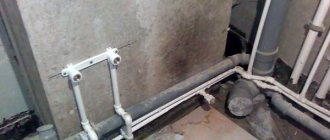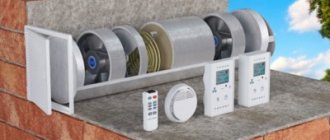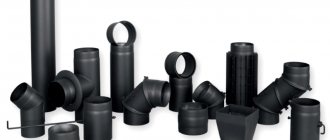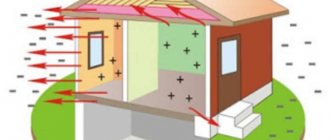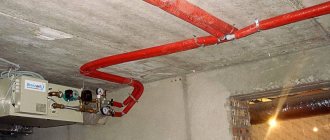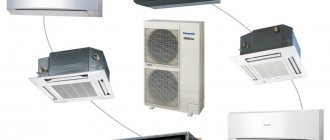Basement ventilation
Each of you, probably, visited your grandmother in the basement or cellar, making a heroic trip for a jar of conservation. Have you noticed that the basement basement is different? The dark and damp basements or cellars were not very attractive, were they? But dry and light did not cause either disgust or fear. Of course, our ancestors did not really bother with the question of how to make ventilation in the cellar. All they needed was just a piece of pipe for the hood and a slightly open lada to ensure air circulation, which was actually limited. How are things now? When building a new house or refurbishing an old one, after buying on the secondary housing market, a truly zealous owner will definitely pay special attention to the arrangement of the basement or cellar. In particular, the achievement of minimum humidity, which is very important for rooms located below the level of the floor surface. Now we will not talk about water-resistant materials and features of drainage structures. It will be about the usual, at first glance, ventilation. However, not everyone knows how to properly make it with your own hands in order to reduce moisture condensation in the cellar or basement to a minimum. Therefore, everyone interested in how to install such ventilation is welcome to a small technical educational program.
So what do we actually know about air currents? Cold masses go down, and warm ones go up, thereby forming air currents, which are called "wind" in the common people. Well, as you know, no one in the basement will organize the wind in the literal sense of the word. But it is not only possible, but also necessary to create (and technically install) a light draft that ventilates the basement or cellar. Let's turn to the classic scheme of supply and exhaust ventilation.
Options for the hood in the cellar
What we need for the correct ventilation device, let's list:
- Asbestos-cement pipes, with a diameter of 100-150 mm (plastic sewer can also be used, this simplifies and facilitates installation).
- Insulation (mineral wool is perfect).
- Insulation material (roll foil for heating systems).
- Fasteners.
- Protective elements (plug-mesh and galvanized "umbrella").
- Polyurethane foam.
Supply and exhaust ventilation of the cellar
This, of course, is not a complete list of the materials and devices used. Some, especially meticulous ones, install a condensate collection and removal system, as well as forced circulation systems. We will definitely say a few words about this, but only after describing the classic ventilation installation scheme.
Supply and exhaust ventilation of automatic type
Choosing a place
First of all, you need to figure out where and how to arrange our air ducts so that the air movement in the basement or cellar is correct, i.e. designate entry and exit points.
Important!
Remember - the incoming air duct (air intake) is always below the outgoing (air intake) level.
Entry and exit points of the cellar ventilation system
To put it simply, the entrance should be approximately 300-400 mm from the level of the floor screed, and the exit should be closer to the ceiling, and they should be located in opposite parts of the basement to ensure better air circulation.
Ventilation vent
How to make ventilation in the basement correctly: design options and calculations
The basement is an integral part of a modern private house or cottage.It serves to accommodate communications of heating and water supply systems in it, can be used as a garage, workshop or vegetable store. In any case, the basement needs to maintain a given level of temperature and humidity. Dampness negatively affects the preservation of agricultural products, leads to the appearance of mold, destroys the walls of the house and negatively affects other objects. A well-equipped basement ventilation will help to solve this problem.
The subtleties of arranging a cellar in the garage
To achieve the optimal microclimate in the basement of the garage, you should choose one of two options:
- Natural ventilation.
- Forced ventilation.
In the first case, the construction principle is similar to that of a 1-storey building, when special pipes installed in different parts of the room are used to supply and exhaust air. Exhaust air ducts can be installed in two ways:
- Through wall mounting and outdoor installation.
- By leading the pipe through the roof.
Before making ventilation in the cellar, it is worth choosing a suitable pipe. It should have a length of 2.5-3 meters so that the product protrudes 0.5-1.0 m above the roof. A deflector is mounted in the upper part of the air duct, activating the movement of the air flow, and also preventing dirt and dust from getting inside. The optimum deflector diameter is twice as thick as the pipe diameter. If you wish, you can do it yourself using plastic.
The air supply pipe is mounted at a distance of 0.5 m from the floor and the same above the ground level. From above, the outlet is closed with a grate to protect it from living creatures. Air outlets can be made of plastic or asbestos. The former are cheaper and more resistant to damage and low temperatures. The most affordable option is tin, but this material does not last long.
An important element of ventilation are dampers, which can be purchased or made on your own. The main thing is that the product completely blocks the pipe flow. Air duct closing system is automatic or manual. Its presence allows you to timely shut off the flow of cold air into the basement.
The second option is to make organized ventilation using fans (forced method). The main difficulty lies in the supply of voltage, taking into account the requirements of electrical safety. In the absence of special skills, you can watch a training video or invite specialists. Do everything so that the wiring is reliably protected from moisture.
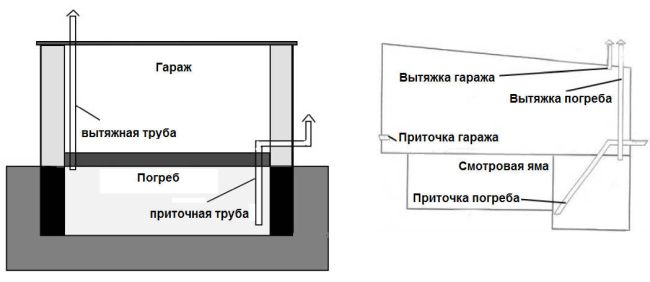
Combined type of ventilation
If you live in a region with a warm climate, classic natural ventilation will not work. The best solution is to organize a combined type system, which is versatile, suitable for any weather and different types of residential buildings (five-story or conventional construction).
As in the past, the main components of the system are pipes for supplying and exhausting air flow. The difference is the availability of an automated system, which implies the installation of an additional fan in the air exhaust pipe. If you decide to build a basement for long-term storage of food and live in a warm climate, this type of ventilation is best suited.


Cellar ventilation with two pipes
Two-pipe version
To make ventilation correctly, it is advisable to familiarize yourself with the nuances, subtleties of construction and design work:
- The ideal option is to install ventilation during the construction phase.
- Air circulation pipes must be of the same diameter. You cannot make the inflow more than the hood, otherwise all the products in the cellar will be spoiled.
- It is forbidden to place pipes close to each other, otherwise the cellar will not be fully ventilated.Experts advise mounting them at opposite corners to give stale air a boost.
- The hood is mounted near the ceiling, as the warm air goes up. This will allow for constant air cleaning, avoiding stagnation, providing an optimal microclimate.
- The hood hole must be located one and a half meters above the roof, so the length of the pipe must be taken into account.
- Most often, the system is made of plastic.
- The exhaust system will pass through a special hatch.
- If the ventilation is intended for the cellar, which is located under the house, you need to insulate the doors with high quality.
- The external supply pipe is equipped with a grate to protect against insects, dust, rodents, and dirt.
Ventilation edges with two pipes should be at different levels. The top of one pipe is placed near the ceiling, and the bottom should be lowered to the floor. Taking into account temperature differences, pressure changes at the outlet and inlet from the pipe, active air circulation occurs.
Visual diagram of the ventilation of the cellar
Testing the ventilation of the cellar should begin with a simple experiment: it is important to provoke air circulation by creating different temperature indicators inside and on the surface.
Cellar extractor hood with one pipe
To keep the basement ventilated, dry, even one pipe is enough. Any cracks will play a positive role.
Hood with fan
The only thing worth paying attention to is that the diameter of the duct tube must be no more than fifteen centimeters. If it is not possible to establish air circulation, it is recommended to organize the process using mechanical awakening. Everything is extremely simple: install a fan in the chimney.
The main component of an excellent microclimate in the cellar is air humidity, which can be regulated with a fan. It is important to note that too high a humidity level will impair the ventilation quality. This is the case if groundwater penetrates into the basement, which happens in spring when snow melts. During this period, the cellar becomes damp, and the ventilation system is not able to cope with such serious loads.
You can solve the problem as follows: take a tin, it should be more than one and a half millimeters of the pipe hole. Drill a side at the bottom, carefully cut a hole, and attach a screw below so that the nut and thread remain outside. It turns out a balancing home-made system that can upholster an even position for a scoop. In the side of the can, namely opposite the hole, a trapezoidal tail should be mounted so that it performs the function of a weather vane, namely, it turns the device towards the wind and catches air currents.
Install the wind collecting system on the tube: put the threaded axle, fix it with the bracket. Drill the bottom in the center, pull the bolt from the inside and screw on the threaded axle. Complete the installation process with balancing. With the help of such a device, ventilation can be significantly improved. The principle of the cunning device is incredibly simple. The system is rotated by the wind vane so that the side opening is directed against the air flow. Thanks to this scheme, clean air can easily penetrate the pipe and enter the basement.
Summing up, it can be noted that well-equipped ventilation shows its own priorities for several weeks. The air of the cellar will be cleaned, slightly humidified, and the products will not freeze and dry. As for the indicators of the temperature regime, they can easily stabilize.
Supply and exhaust ventilation device
Let us now analyze how to make ventilation in the basement. The easiest way will be to make ventilation in the cellar or basement of the supply and exhaust type or forced.
First, let's make a calculation.
For 1 m2 of area, there should be 25 cm2 of the cross-section of the duct.
With an increase in ceiling height or humidity, the diameter of the duct increases. The wooden box can be divided into two halves for supply and exhaust ventilation, but it is best to use plastic pipes or corrugated metal boxes.
The supply and exhaust ventilation device can be supplemented with a deflector on the roof of the house. It will create additional vacuum in the pipe and improve the outlet of warm air.
A managed compulsory system will be much more efficient with comparable labor costs. To do this, we need special duct fans that operate on a voltage of 36 V. This feature is associated with the category of all basements that allow the use of only such currents.
Therefore, a transformer is installed in the electrical panel that reduces the voltage from 220 V to 36 V. And the wiring must be laid in cable channels. These and other rules can be found in SNiP 41-01-2003 heating, ventilation and air conditioning.
For small rooms, only one such fan per exhaust arm will be sufficient. Fresh air will be supplied by vacuum in the basement. But the efficiency of the system will be much higher if you install a second supply pump and combine their work on one control panel.
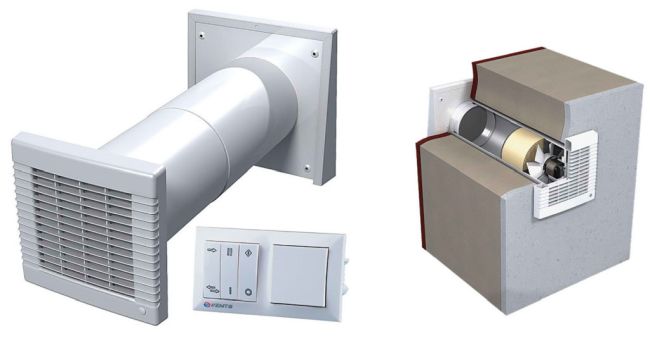

Now on sale you can find programmable control panels with temperature and humidity sensors, and the duct fans themselves are available in all standard sizes and are compatible with almost any ventilation ducts. For convenience, they are already built into the body, have a protective grill and replaceable filters.
It is preferable to use PVC as pipes for ventilation ducts in your own home. They are strong and light enough to be attached to walls and ceilings using conventional wall plugs. They are not afraid of moisture and temperature extremes, and the cost is lower than steel structures.
Functional check
Determining air circulation is easy enough. To do this, you can use the open flame of an alcohol burner or candle, or attach a piece of paper to the opening of the exhaust duct. A good draft will hold the sheet securely. The thermometer installed in the area of the supply air duct will not damage either.
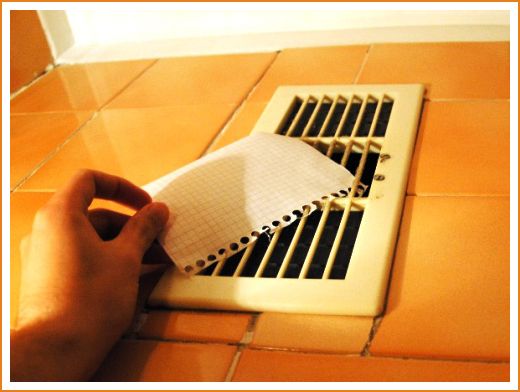

The following signs indicate poor ventilation of the basement, garage:
- Condensation on the wallsand the humidity exceeds 95%. The maximum permissible humidity for storing workpieces and crops is 85-90% at a temperature of 3-40C. For residential premises, garages, humidity indicators should not exceed 40-50%;
- Mold and fungal growth on the walls and ceiling;
- Bad smell indoors and heavy stale air;
- Sudden changes in temperature talk about the wrong device for supply and exhaust ventilation or errors in calculating the cross-section of the channels;
- In warm weather, condensation may not be noticeable, but in winter the walls will be abundantly covered with frost;
- Carbon dioxide can accumulate in the vegetable cellar. You can identify it by a dying candle or a match. In this case, it is necessary to open all the dampers and ventilate during the day, without going down into the room without protective equipment.
Ventilation in the bathroom and toilet: selection and installation of an exhaust fan - a detailed article.
The installation of ventilation systems will be much more efficient if together with it we carry out measures to maintain the microclimate:
Things to Consider Before Performing Ventilation
When thinking about how to properly make a hood in a cellar, you should take into account some points:
- take into account ventilation for the cellar at the time of construction;
- choose the right diameter;
- correctly position the ventilation pipes.
When deciding how to make ventilation in the cellar, it is important to think over the scheme and reflect the main points in it.
Extraction during construction
The very correct hood in the cellar can be created only when it is laid simultaneously with the construction of the house. Then the needs of the family and the future use of the basement can be taken into account.
When the walls of the cellar are laid, a special opening is left behind the masonry, where a ventilation pipe can be inserted. Sometimes the pipe is installed already at this stage. A small hole is made in the masonry, where this pipe is supplied to extract air.
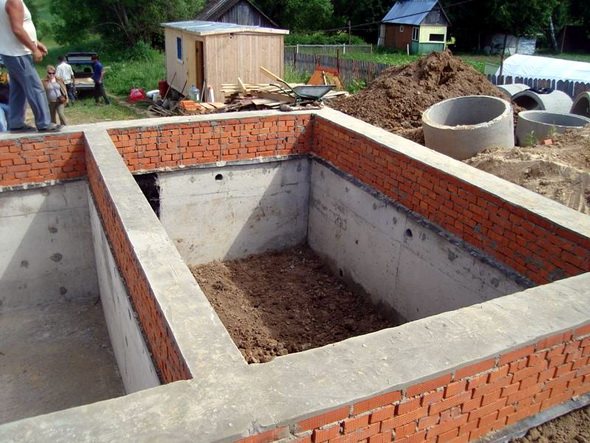

Correct selection of the ventilation diameter
Ventilation pipes should not be too small in diameter, as in this case the inflow and outflow of oxygen will not be complete, and musty air will accumulate inside the room.
An important condition for high-quality ventilation is the uniformity of the diameters for the supply and exhaust pipes. In rare cases, the fume hood may be slightly larger. Then the air exchange will be faster. However, the intake must never be wider than the exhaust, otherwise air circulation will be impaired.
Poor access of oxygen to the basement and the outflow of vapors can be dangerous to humans. Sinking into the cellar, you can feel a sharp lack of air. For some, this even leads to fainting.
How to arrange ventilation pipes
Ventilation in the cellar under the house will be complete if both pipes for air circulation are located correctly relative to each other. They should not be placed side by side. Ideally, if possible, install them in opposite walls. As a last resort, this can be done along one wall, but in different corners.
This arrangement will allow you to fully update the climate in the basement. When clean air enters the room, it travels a greater distance before leaving. This will keep the basement fresh.
The level of location of the supply and exhaust pipes is also important. Fresh air is always cooler. Therefore, the supply duct should be located at the bottom, near the floor. The exhaust outlet is ideally placed directly under the ceiling. Having passed through the basement, oxygen heats up and rises. Thanks to this arrangement, air exchange will be carried out efficiently.
The free end of the exhaust ventilation pipe is taken out and raised about 1.5 m above the ridge. When the ventilation of the cellar under the house is carried out, plastic sewer pipes are often used. Their diameter is sufficient to cope with ventilation functions perfectly.
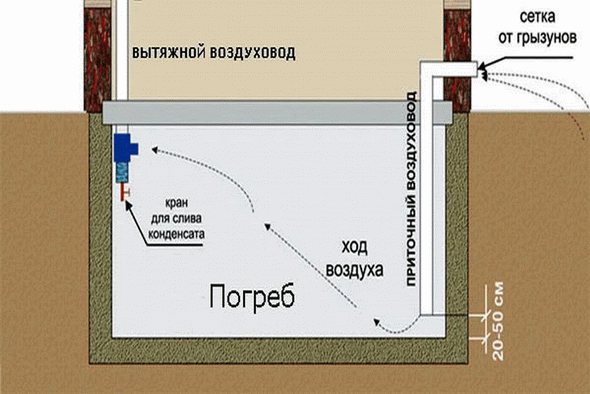

It is important that there are as few bends as possible in the air inlet and outlet pipes. Make sure that there is one pipe diameter along the entire length. If there is a narrowing somewhere, the quality of ventilation will drop dramatically. If you follow these guidelines, oxygen exchange will be more free.
Always cover the outer ends of the ventilation openings with grills. Without them, there is always the likelihood of small rodents or debris getting there. As a result, these channels quickly clog up, and dampness is not removed from the basement.
How to properly ventilate the cellar
In order to correctly make a hood in the cellar with your own hands, it is recommended to apply clear drawings and diagrams, this will help prevent the formation of condensation, save the crop from damage. Thanks to the chic assortment of building materials, it is possible to make a cellar ventilation in the garage with your own hands.
When there is a cellar under the garage, but there is no ventilation in it, the various poisons and toxins released by the car will adversely affect the products. Flow and exhaust ventilation will help to solve this problem. This type of air exchange is possible even naturally or with fans. As for the top of the pipe, it is displayed above the garage.
An accurate, correct exhaust scheme will help eliminate the problem in the shortest possible time. If you install a supply pipe, it is possible for the purified air to flow into the basement. The role of a pipe with an exhaust function in a garage with a cellar is to eliminate excessive moisture and toxic substances. The optimal output is a successful combination of an exhaust and supply system, which can be done in two ways:
- Natural air exchange. This option is the most popular and widespread, you will need to install two pipes - supply and exhaust. The device functions perfectly, because the temperature in the basement and outside is significantly different. The main disadvantage is that the hood does not function during the warm period. As for the winter, it will have to be warmed up additionally.
- Forced ventilation in the cellar. The proposed system is the best option out of all the existing ones. Thanks to this ventilation, it is possible to achieve an optimal microclimate, which is similar to that of a street. Helps to ensure perfect air exchange, as various units and fans are involved.
Arrangement of forced ventilation is carried out using electric fans that are added to the system. It is very simple to make such a system with your own hands. The main advantage is the stabilization of temperature and humidity levels, regardless of the weather and season.
The scheme of the proposed device hardly differs from natural ventilation. The algorithm of actions is simple: fastening the pipes, installing the fan in the chimney. Instead of a fan, you can use a rotary diffuser-vane, it is installed on the top of the supply pipe, and functions from the wind. A deflector will help ensure good ventilation, which improves air exchange and reduces air.
The best and most advanced option is mechanized forced ventilation using a special monoblock. It installs software, which controls the modular system. The main problem and disadvantage is the high cost.
Scheme of proper ventilation of the cellar in the garage
To effectively use the garage cellar, it is important to provide proper, adequate ventilation. To create natural ventilation, you can independently mount the system using plastic sewer pipes. In the process of work, it is worth following some rules and tips:
- the ventilation circuit must contain a limited number of bends, pipe turns;
- you need to insulate the exhaust pipe, otherwise condensation will appear;
- close the pipe entrance with a cap to prevent the ingress of precipitation;
- the entire length of the pipe must be of equal diameter.
To equip natural ventilation, the area of all openings should be calculated. The beginning of the supply pipe is 50 cm above the basement floor, it is taken out. As for the exhaust, it is fixed under the ceiling, pulled over the roof of the garage. It is important that the pipes are in opposite corners of the room.
Having completed all the calculations, having determined the cross-section of the diameter, it is necessary to decide on the material of the pipes for the ventilation system. it is customary to use two main types, namely asbestos cement and low pressure polyethylene. Pipes made of asbestos cement are similar in structure to slate, therefore they are usually called slate. Such raw materials are considered to be durable, strong and reliable.
Polyethylene pipes are absolutely not inferior in strength, but the installation method is much easier, you do not have to use the services of professionals. The main condition is that they need to be soldered.
Recommendations for arranging ventilation
Arrangement of ventilation in the basement requires compliance with some rules. This allows the design efficiency to be maximized. Consider what points you need to focus on.
The pipes used during the installation of the system should not have different diameters.However, if necessary, you can deviate from this rule. A fairly common problem that ventilation systems are prone to is air stagnation. The way out is to install an exhaust pipe with a larger diameter than that of the supply pipe.


Do not install the supply and exhaust pipes in close proximity to each other. This negatively affects the efficiency of the system. The best location is on opposite walls of the room.
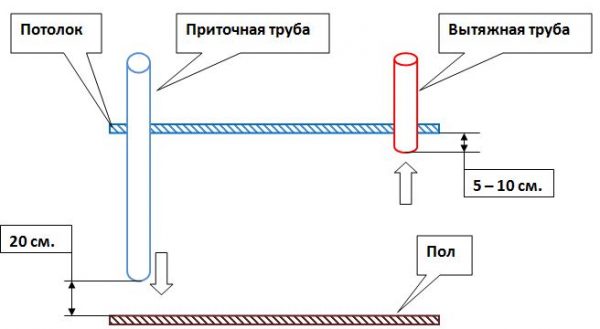

It is recommended to equip the exhaust duct closer to the ceiling. This allows you to effectively remove air that is at a higher temperature from the cellar. The features of the location of individual structural elements can be studied in the photo.
For communication responsible for airing the premises, the best option is to use plastic pipes, the main application of which is the laying of sewers. Such pipes have the most suitable geometric and technical characteristics. However, for large basements, this solution is not advisable.
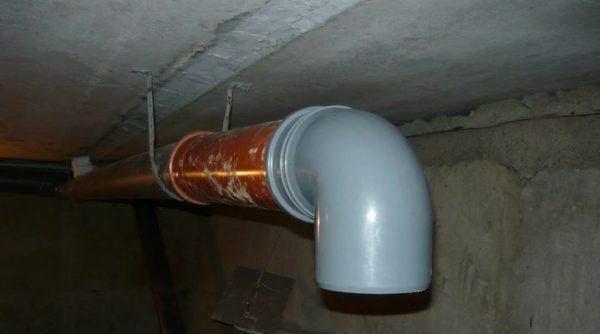

PVC pipes are well suited for ventilation
It is worth saying that in basements that are not under a residential building, it is easier to organize ventilation. In such a situation, an access hatch can be equipped for an exhaust outlet.


Cellar ventilation schemes
For ventilation of underground rooms, you can use 1 of 3 schemes:
- classic system with one chimney;
- scheme with two pipes - supply and exhaust;
- forced air exchange.


One-pipe ventilation system - fresh air enters the store through the door
The choice of option depends on the design of the basement, its location and other conditions. The 1-duct system shown in the picture is applicable for cellars with a separate exit to the street. How the scheme works during the cold season:
- The underground temperature is always above zero (if the basement is built correctly). Warmer and more humid air rises to the upper zone and goes out through the vertical exhaust duct.
- Cold air masses take its place - seep through the inlets in the door (hatch), then sink to the floor of the cellar.
- As it warms up + humidifies, the air begins to lose weight, rises and is again thrown out through the pipe.
An important point. With a one-pipe scheme, the ventilation duct should be installed at the maximum distance from the entrance door, at the opposite wall. This ensures a complete renewal of the indoor air environment.
The ventilation system with two pipes is used in cellars without a separate entrance - under private houses, garages and other outbuildings. The natural circulation of air masses is organized in a similar way, only the second vertical channel, which descends to the floor itself, serves as an inflow. Cold outside air descends through the supply air duct, replacing the gases escaping into the street.
The pipes are located in opposite corners of the storage facility and are removed in two ways:
- in the ground outside the building;
- right through the roof, as shown in the ventilation diagram for a garage with a cellar and a viewing pit.
In the first case, the head of the supply pipe is at the level of the basement; it is better to raise the exhaust shaft to a height of 2 m (counting from the intake hole in the basement). If the building is surrounded by other buildings and there is nowhere to bring out the second channel, the air duct is laid in the second way - to the roof. The end of the exhaust pipe rises above the ridge.


The layout of the ventilation ducts and the movement of air flows in the garage. An overflow pipe cannot be placed between the pit and the cellar.
Note. Manufacturers of ready-made cellars made of plastic or concrete immediately provide for two-pipe ventilation. Channels exit vertically through the ceiling of the storage, the hatch closes tightly.
Active air exchange with forced induction is organized according to a one-pipe or two-pipe scheme, the fan is placed on the exhaust duct.The ventilation operation can be automated by connecting the blower to the mains through a thermostat. The device with the sensor will turn off the fan when the temperature drops below the set threshold. See the video for details:
Basement ventilation systems
The most common version of the basement arrangement involves the location of the cellar under the main rooms of a private house. In this case, two variants of the hood device are used:
- two-channel;
- single-channel.
The first one is used most often. It has a number of advantages in terms of servicing a cellar with a larger area.
Two-channel ventilation device
The ventilation technology with two points of inflow and outflow has no difficulties in installing air ducts.
Basement ventilation with the ideal development of the building process of the house should be calculated at the stage of the beginning of construction. So you will get by with less financial and labor costs.
Air supply pipe.
The inflow device ensures the flow of air masses from the environment, by means of air intake through the inlet (vent). The air is most often located at the side wall of the main building - the elevation above the level of the house blind area should be 20-30 cm.
The very hole in the pipe is closed with a ventilation grill. If necessary, the grille can be equipped with an axial fan. The air duct is laid through the base of the house, the basement ceiling and introduced into the basement. Outlet ventilation stretched almost to the floor cellars, retreating 15-20 cm. Thanks to this arrangement of the ventilation duct, cool air from the street enters the duct, passes through it and enters the basement near the floor. After that, it gradually heats up and displaces the upper layers of warm and humidified air from the basement through the exhaust pipe.
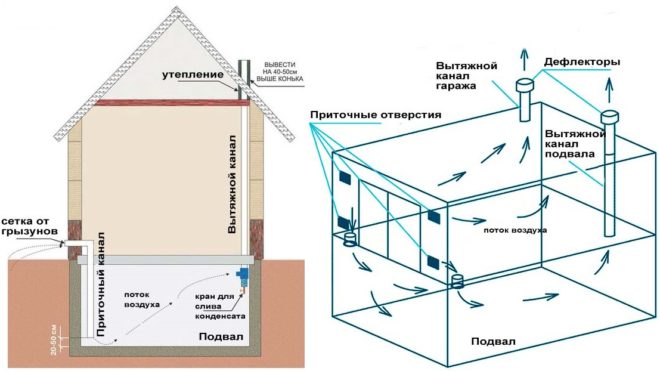

Outflow system for contaminated masses.
It is located in the opposite corner of the cellar room, diagonally relative to the supply pipe. The main principle is the need to capture heated air. This is achieved by placing the entrance of the pipe under the very ceiling of the basement (10-15 cm from it). Then the exhaust duct passes through the ceiling of the main building, through the attic to the roof.
Depending on the shape of the roof and on the prevailing wind rose, it is necessary to achieve conditions under which the wind will be directed to the previously installed deflector above the chimney. A deflector is needed in any case, as it protects the pipe from atmospheric precipitation. It also additionally creates negative pressure under the cover, due to which the air flow in the pipe is enhanced.
The longer the exhaust air duct, the stronger the flow of the blown air in it.
The exhaust duct should be equipped in several layers to create the necessary insulation. To do this, at the planning stage of premises and utilities of the house:
- mount a brick or wooden pipe well cellar ventilation;
- choose a place for laying insulation between the well and the pipe;
- wrap the pipe itself with a special insulation that will not absorb moisture.
It is necessary to insulate the exhaust air duct in order not to obtain air condensation due to sudden cooling in the cold period.
Regarding the last two points, it is worth noting that only double thermal insulation can provide resistance to freezing of the air duct. If the region where the house and the basement are located suggests abnormally low temperatures, it is additionally necessary to make an air gap between the main insulation and the insulation on the pipe itself. This solution will significantly reduce the thermal conductivity of the channel as a whole.
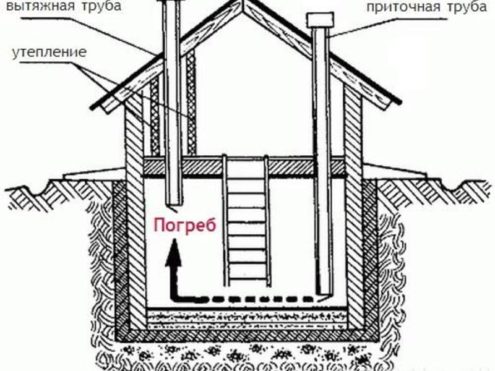

Single-channel ventilation
In rare cases, when the cellar area is less than 5 square meters, it is possible to combine the oxygen inflow and outflow channels in one pipe. This is the basic principle of operation of this system and the main difference from the two-channel arrangement. The pipe is divided by a partition, through which two circulation channels are obtained: one for the inflow, the second for the exhaust.
Cellar ventilation device with one and two pipes: an overview of important technical aspects
Owners of private houses, as a rule, use a cellar for storing food. But due to the lack of windows, the room is deprived of the normal level of air exchange. This leads to high humidity, the formation of mildew with mold, accelerated spoilage of food, which is very unpleasant, isn't it?
Want to prevent these kinds of problems, but don't know how? We will give you a solution - after all, properly organized ventilation of the cellar with two pipes will help to ensure the flow of air. And you can do it yourself.
The main stages of work and the rules of arrangement are discussed in detail in our article. The material is supplemented with visual photo instructions and detailed video recommendations for organizing optimal climatic conditions in the cellar. Having studied which even a beginner will be able to understand the basics of the ventilation system at home.
Natural ventilation
Practice has shown that in most cases, natural ventilation in the cellar is equipped (its scheme is simpler). At the same time, the task remains the same - the removal of old and the supply of fresh air masses. To accomplish the task, two pipes are used - to ensure the inflow and exhaust of air, which are mounted in opposite parts of the room. The greater the distance between the pipes, the better.
Make ventilation so that the air intake pipe is at the bottom and the exhaust pipe is at the top. This requirement is due to the laws of physics, according to which heated air masses are concentrated in the upper part of the room, and cool ones - in the lower part. After the air comes from the street, it falls down, after which it warms up and goes out into the street. Do-it-yourself ventilation of the cellar should be carried out taking into account this rule.
In winter, the air is even heavier, so the ventilation process improves. As for the optimal pipe material, it is better to use asbestos for the cellar. Its advantages are affordability and durability. To discharge the air flow, a reflector is fixed to the air duct.


Basement air exchange and microclimate
In the basements of private houses, it makes no sense to arrange a forced draft. In most cases, the set tasks can be solved by natural ventilation in the cellar. To organize such air exchange, you need to understand what factors affect the microclimate inside the basement:
- Soil temperature at a depth of 1.5-2 m. Depending on the region, this indicator varies from -3 to +10 degrees (in winter). That is, the cellars of the northern and southern regions must be insulated during the construction phase.
- Cold air is denser and heavier than warm air, therefore it always sinks to the floor of the room. This movement of streams is called convection.
- At the same temperature, more humid air is lighter than dry air and rises upward. This is why condensation drops hang from the ceiling, and the walls near the floor practically do not "sweat".
- The humidity of the air depends on the proximity of the groundwater and the external waterproofing of the walls. If insulation work was not performed during the construction of the basement or basement, prepare to fight the dampness.
- The temperature of the ventilation air supplied to the cellar from the street.
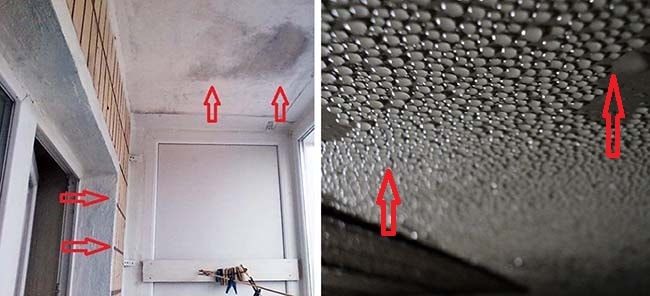

Waterlogged air tends to rise to the ceiling, on which condensation falls
Reference. The relative mass of air molecules is 29 units, water vapor - only 18. Accordingly, the more moisture 1 cube of air contains, the lighter it is.Example: if you open the door to a cold balcony in winter, condensation will immediately appear on the ceiling (see photo above).
Now, specifically about the ventilation device in the vegetable cellar. To organize the natural circulation of air flows, we use the phenomenon of convection. Action plan:
- Choosing a ventilation scheme. The task is to make the correct exhaust from the upper zone of the basement and it is imperative to provide an inflow of fresh air.
- We calculate the air exchange, determine the diameters of the exhaust and supply pipes.
- We select pipe material, install ventilation ducts.
A cellar under a residential building or garage, built without a project and external waterproofing, can become very damp in winter. Such storage facilities have to be dried in the summer - we will list the methods at the end of the publication.
Do-it-yourself cellar ventilation: diagram and work process
No basement room can do without a ventilation system, since in the absence of a constant supply of fresh air, dampness cannot be avoided. In basements and cellars, not only canned supplies are usually stored, but also fresh vegetables and fruits that "breathe", from which moisture must accumulate in the room. In addition, the walls can absorb moisture from the soil on the outside, if the waterproofing of the foundation and basement was poorly arranged during construction.
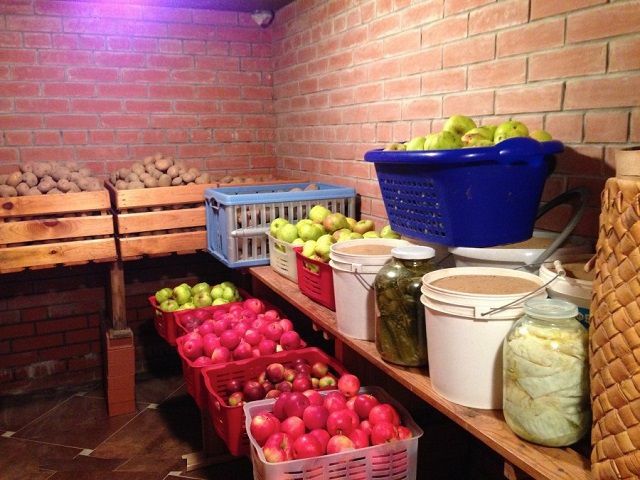

Do-it-yourself cellar ventilation
Do-it-yourself ventilation of the cellar is quite simple. Moreover, it is possible to install and adjust the operation of this constant air exchange system not only at the construction stage, but also in a ready-made storage facility.
The content of the article
1 The principle of operation of the system 2 Recommendations for the arrangement of ventilation of the cellar 3 Types of ventilation systems in the cellar 3.1 Natural ventilation system 3.2 Video: Natural ventilation in the cellar under the garage 3.3 Forced ventilation system 3.4 Video: an example of homemade forced ventilation of the cellar 4 Calculation of the diameters of ventilation ducts 5 Installation of ventilation 5.1 Additional actions to maintain a normal microclimate 6 Drying the cellar 6.1 The first method - boxes with a hygroscopic substance 6.2 The second method is the old method with a candle 6.3 The third method is a metal brazier 6.4 The fourth method is to use electric heaters 6.5 The fifth method is an ordinary household fan 6.6 The sixth method - a portable stove 6.7 Waterproofing processing of the cellar 6.8 Video: how ventilation in the cellar can be arranged
How the system works
The operation of the ventilation system is based on the laws of physics, and if you carefully consider its schematic diagram, you can see that it is arranged very simply and clearly.
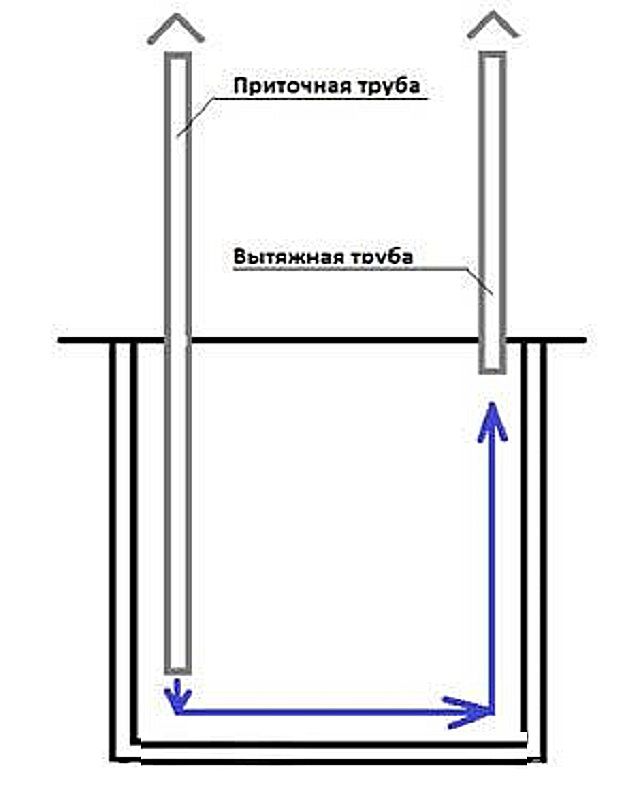

The general ventilation principle is extremely simple
There are two ventilation openings in the cellar room, through one of which fresh air enters the basement, and through the second it is removed along with all the fumes. But the system would not be effective enough if pipes of a certain diameter were not brought to the vents.
Also, the quality of ventilation is highly dependent on the correct location of the exhaust and supply pipes and on raising them above the ground above the cellar.
Ventilation pipes can be installed in the walls of the basement, if it is located under the house or garage, or they can be brought out through the ceiling, in the case when the cellar is arranged in the yard, as a separate building.
Another important point in the calculation and installation of the system is the height of the installation of pipes from the basement floor and bringing them out into the street, since too much cold air can enter the room, which will be dangerous for vegetables stored in chests fresh. You cannot make the holes too small, since the musty air will not completely leave the room, which means that the products stored in it will definitely start to deteriorate.
Recommendations for the ventilation of the cellar
Before starting the installation of any of the types of ventilation systems, you need to familiarize yourself with some recommendations that must be taken into account during design and construction work:
It will be correct if the ventilation system begins to be laid during the construction of the cellar - in this case, channels are left in the masonry of the walls, into which ventilation pipes are installed.


Of course, the best option is to install a ventilation system even during the construction of the cellar.
In order not to guess later where it is better to install the pipes, ventilation must be immediately included in the cellar project.
The pipes to be installed must have the same diameter - this parameter will make the air circulation uniform. If it is necessary to speed up the removal of stagnant air saturated with dampness, the exhaust pipe can be taken with a slightly larger diameter than that of the supply pipe. However, under no circumstances should a chimney be installed with a diameter smaller than that of the supply one, as air under such conditions can begin to be trapped inside the room. This will negatively affect the products stored in the cellar, but the main danger is still different - a certain threat to human health is created when he is lowered into a gas-polluted underground room. Never place both ventilation pipes next to each other, as the room in this case will not be well ventilated. They must be mounted on opposite walls or in opposite corners. This is done so that the fresh stream, before going outside, passes through the entire room and pushes the stagnant air out into the chimney. The chimney opening must be mounted just below the ceiling, as the warmer exhaust air rushes upward. Such its location will contribute to the constant purification of the air, without stagnation in the ceiling area, and hence the good preservation of products. To ensure good draft, the ventilation pipe of the hood rises above the ridge or embankment above the cellar ceiling by at least 1500 mm. For the ventilation system, plastic pipes are most often used, intended for conducting sewage. This diameter is usually sufficient for small rooms. If the cellar is located under a garage or under another utility room, then an entrance hatch can be used as an exhaust hole.
In this case, two doors are made, one is insulated - winter, and the other - in the form of a frame, with a fine lattice fixed on it. The grate is necessary so that small rodents do not slip into the basement.
The insulated hatch is removed in the summer for constant ventilation of the cellar. If the room above the basement is insulated, then airing sessions can be carried out in winter.
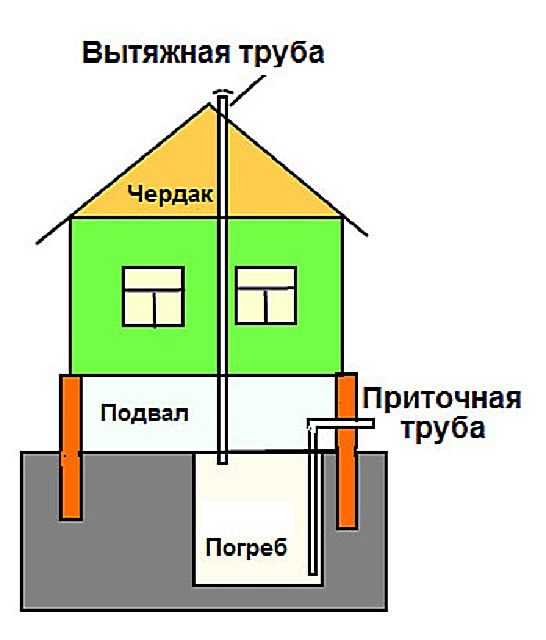

Option - a cellar in the basement under the house
When installing ventilation in a cellar located under a house or garage, it is necessary to ensure that there are as few bends and turns at both the supply and exhaust pipes as possible. Ideally, it is best to position it so that the pipe is perfectly straight. The pipe must have the same diameter along its entire length, without extensions or contractions. On the street, the supply pipe, if it is not high above the ground, must be closed with a net (grate) to protect the cellar from the penetration of rodents or other small animals and birds.


Inlet pipe, taken in by a grill
It is recommended to install dampers regulating air inflow and outflow in both pipes, which are especially necessary in winter. They help to meter the intake of cold air in severe frosts and, accordingly, the outflow of warm air to maintain the required microclimate in the cellar.


Umbrella for chimney head
If the pipe heads are located strictly vertically, they must be protected from the ingress of atmospheric precipitation, dust and debris by installing a metal umbrella or deflector on top.
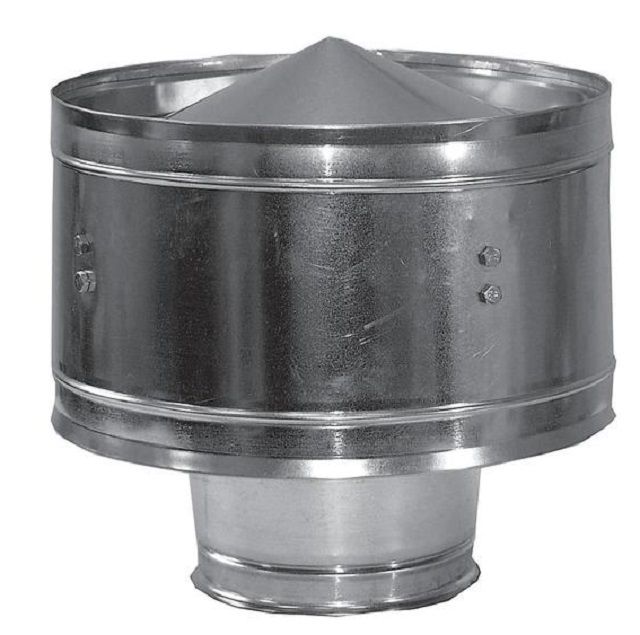

The deflector is more profitable, as it creates an artificial vacuum and increases traction
When using a deflector, a vacuum area is created around it, and this phenomenon contributes to an increase in thrust.
The outdoor section of the chimney must be well insulated to avoid condensation during the cold season.
Types of cellar ventilation systems
There are two basic types of ventilation systems - natural and forced. And one or another option is chosen depending on the volume and layout of the basement room.
Natural ventilation system
Natural ventilation is based on pressure and temperature differences between indoor and outdoor. Effective operation largely depends on the correct placement of the pipes. So, the inlet opening should be at a maximum height of 250 ÷ 300 mm from the floor, and the exhaust outlet - below the ceiling level by 100 ÷ 200 mm. It is impermissible to place it even lower, otherwise the ceiling will begin to damp.
This ventilation system may be clearly insufficient for a large-volume cellar room, or if it consists of several rooms.
Video: Natural ventilation in the cellar under the garage
Forced ventilation system
The forced ventilation system has all the same channels (pipes), but fans are built into them to create forced air movement.
In the simplest forced-type systems, the fan is installed on the exhaust duct. Thus, an artificial vacuum is created in the room, which contributes to the active flow of fresh air into the cellar through the inlet. The power of the selected fan will depend on the volume of the room.
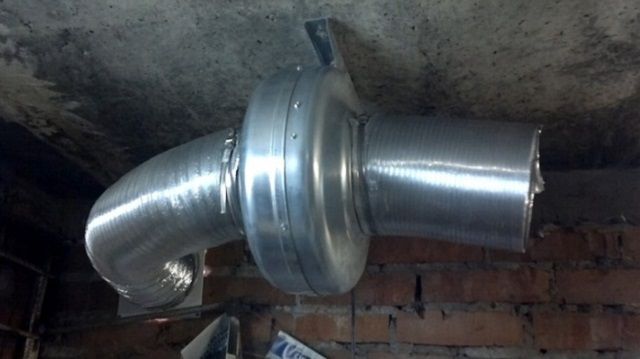

Duct fan in a casing
They also act in a different way - they install fans on both the supply and exhaust ducts. This is true in voluminous basements with complex configurations. Here you will definitely need the help of a specialist in order to calculate the consistency of the intake and exit of air, that is, the diameters of the channels and the power (performance) of the fans installed in them.
Video: an example of homemade forced ventilation of the cellar
Calculation of the diameters of ventilation ducts
With any type of ventilation, it is very important to correctly determine the pipe diameters. The calculation algorithms used by professional designers are very complex, and it makes no sense to present them completely. However, when equipping ventilation in a small private cellar, you can use a simplified counting technique.
We recommend: How to conduct electrical wiring in the bath and what is needed for this
So, with some assumptions that are acceptable in these conditions, we can assume that for one square meter of the cellar area, 26 square centimeters of the sectional area of the ventilation duct is required. So, for example, you can estimate what pipe diameter will be needed for a 3 × 2 meter cellar.
We find the area of the room:
S = 3 × 2 = 6 m²
According to the specified ratio, it will require a pipe with the following channel cross-sectional area:
T = 6 × 26 = 156 cm²
It remains to find the radius of the pipe:
R = √ (T / π) = √ (156 / 3.14) ≈ 7.05 cm
Therefore, the diameter of the supply pipe:
Dp ≈ 14 cm = 140 mm.
Provided that only supply ventilation is installed in the basement, and a hatch will play the role of an exhaust, then you can slightly increase the cross-section of the inlet channel by installing a pipe with a diameter of 150 mm.
To ensure air exchange, it is customary to install a pipe with a diameter of 10 ÷ 15% (MISSING) larger on the exhaust duct than at the inlet. In this example, you can install on the exhaust duct:
Dв = Dп + 15%! = (MISSING) 140 + 21 ≈ 160 mm
Ventilation installation
Having made the necessary calculations, taking into account all the above-described nuances, you can proceed to the installation of ventilation.
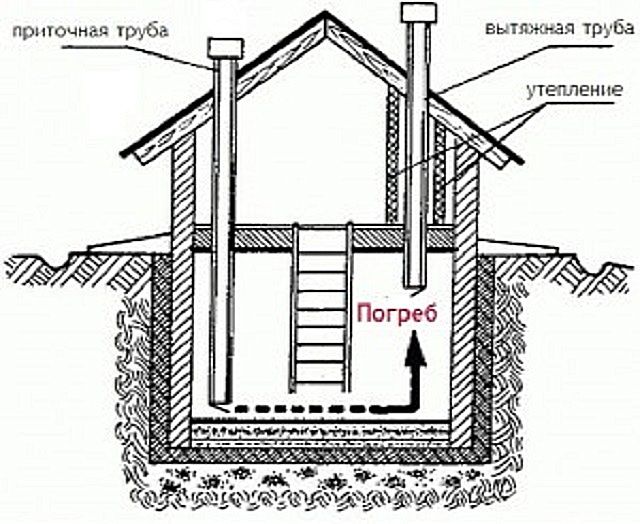

Approximate location of supply and exhaust pipes
If the ventilation system is installed after the construction of the cellar, then a hole must be made in its ceiling for the passage of the air duct. Then, a pipe is lowered through the hole into the cellar, which will work for the hood, it is fixed under the ceiling, no more than 100 ÷ 150 mm below its surface. On the street, the chimney is raised to a height of at least 1500 mm above the ground or above the roof surface.


The supply pipe is always located below
In the opposite corner of the cellar, a hole is also made in the ceiling or wall, and a supply pipe is installed and fixed into it, which is lowered to the floor. It should be located at least 200 mm from the floor and not higher than 500 mm. On the street, the supply pipe should not be made very high. If it comes out through the ceiling, it is enough to raise it by 200 ÷ 250 mm. It should be borne in mind that the lower the intake opening of the supply pipe is, the higher the pressure difference at the inlet and outlet, the stronger the natural draft, and hence the air flow. If the supply pipe is led out through the wall, then a ventilation grill or a plastic deflector is put on it.
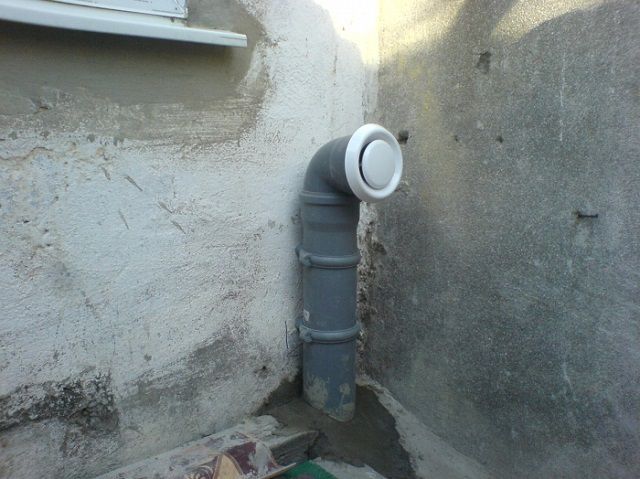

Possible location of the supply pipe
In the event that the installation of ventilation for the cellar is carried out in a house where a fireplace or stove is installed, it is recommended to raise the chimney next to the chimney, since this activates the exhaust of exhaust air from the basement due to the large temperature difference.
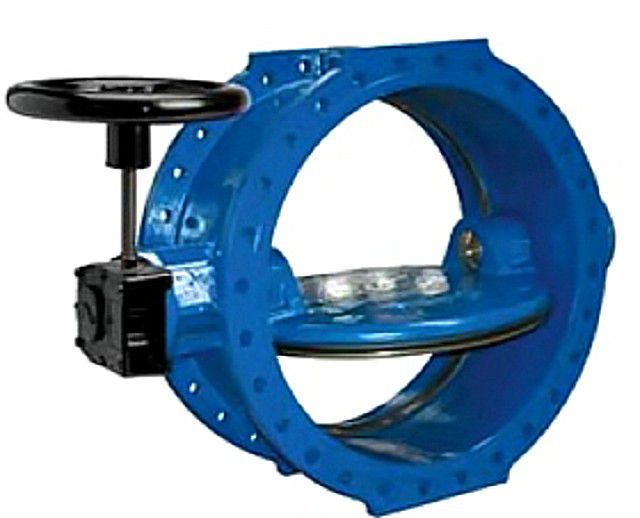

Dampers on the pipes will help to accurately regulate the ventilation process.
It is recommended to install dampers on the pipes inside the cellar to adjust the strength of the air flows. By opening them to the required clearance in the room, the intensity of circulation, humidity and air temperature are regulated. It is from the presence of a damper and the correct regulation of the microclimate in the cellar that it will depend on whether the workpieces are kept in proper condition for a long time.
After the system is assembled, be sure to check it for normal thrust.
To check the pressure of the air flow at the inlet, you need to attach a piece of thin paper to the supply pipe. If it begins to clearly sway, then the intensity of the air intake is good. Another way to check that the system is working is to direct the smoke from paper lit in a metal bucket. It will be enough to have a couple of old newspapers, which need to be lit, allowed to burn out to half, and then extinguished to a state of decay.
Additional actions to maintain a normal microclimate
To maintain a comfortable microclimate in the cellar for storing food, you should periodically perform the following actions:
In order to help reduce humidity in the basement, it must be regularly ventilated. So, in the summer, all doors or hatches are opened and the dampers on the openings are fully opened. The hot summer wind will do its job - it will dry and ventilate the cellar. Other, more effective methods of forced drying of the cellar will be described below.
There are times when it is necessary, on the contrary, to increase the humidity in the storage room. Then water is sprayed in the cellar with a spray bottle, wet sawdust is sprinkled on the floor, or a box filled with wet sand is installed. Sawdust and sand are moistened with water as needed.
Drying the cellar
The process of drying the cellar can also be attributed to ventilation measures, so you should also have a sufficient understanding of them. Moreover, there are several ways to perform this procedure.
As mentioned above, all drying processes are carried out in the summer, but it is additionally recommended to perform them one more time just before laying vegetables in the cellar.
If the room is very damp, then all items of "basement furniture" and boxes (lari) for storing vegetables should be removed from it. It is advisable to dry them in direct sunlight - their ultraviolet component will be an excellent "medicine" for mold and mildew.
All doors and hatches open wide, and if a fan is installed in the basement, then it can also be turned on. Thus, the cellar must be ventilated for 3 ÷ 5 days, and this will be preliminary preparation before the main drainage measures.
The first way - boxes with a hygroscopic substance
In the process of drying, sometimes you can get by with a very simple method. A box filled with quicklime or common coarse salt is brought into the cellar. These components are inexpensive, highly hygroscopic and perfectly absorb moisture. Moreover, they also disinfect the air and walls of the room.
The second way is the old candle method
A very old, popular, extremely simple and affordable way of drying is to install a burning candle near the chimney. It must be installed in an iron container and on a stable stand.
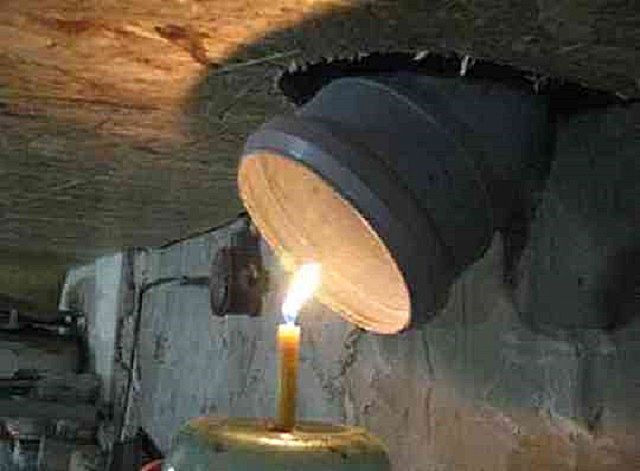

A simple and effective way to dry with a candle
The candle contributes to the creation of more intense draft in the chimney, therefore, the air circulation in the room is accelerated, and its exchange occurs much more often than with the usual ventilation mode.
In addition to a candle, a conventional spirit lamp with liquid or dry fuel can be used for the same purpose.


It will turn out no worse with the use of dry alcohol.
Drying in this way continues for several days, depending on how humid the room is. The spark plug or fuel in the burner is replaced as needed several times - until the desired result is obtained.
The third method is a metal brazier
A more troublesome, but no less reliable way to dry quickly is with an impromptu brazier, which can be made from a metal container, for example, from an old bucket.


Drying scheme using a homemade brazier
Several holes are made in it to increase traction, and then firewood is loaded into the container, preferably birch, as they are able to create favorable disinfecting smoke.
You can create a more complex structure using a cast iron grate, which is installed on bricks placed at its corners. A bucket without a bottom is installed on top of the grate, into which firewood is also stacked and set on fire. The advantage of this method is that the grate is able to glow red-hot and then slowly cool down, giving off heat to the room. At the same time, the thrust increases, and, accordingly, the air exchange is accelerated.
The fire should burn continuously, at least 12-14 hours, so you need to allocate a whole day for these procedures and prepare a lot of birch firewood.
Raising the brazier for additional loading of firewood and lowering it is carried out through the hatch using a cable with a hook. The place for such an impromptu "fenced fire" must be prepared in advance so that no prerequisites for a fire are created.
The fourth way is to use electric heaters
The method using electric heaters can be called not too troublesome. For this purpose, any of the commercially available devices is suitable, but it is best to use convector or "wind" models.


Electric heaters can help in drying, but it will be quite expensive
The heater is installed in the middle of the cellar so that the heat is evenly distributed over the entire area of the room.
When using this method, you need to fully understand that such a drying process is quite long and, therefore, expensive, so you need to immediately calculate your financial capabilities.
Drying the cellar with a powerful heat generator is quite popular, since this method is very effective. It is even used to dry out the basements of flood survivors.


The heat gun will be more efficient
Due to the heat radiation and the powerful flow created by the fan, the cellar dries out quickly enough. The device also works on electricity, but such drying will be cheaper, since it will be much faster. However, you can try to find a heat gun that works on propane.
The fifth way is a regular home fan
Since there are fans in almost every home, they are also often used to remove excess moisture from the cellar. The fan is installed in the center of the cellar and turned on for three to five days. In this case, all existing openings, doors or hatches must be wide open.
Sixth way - portable stove
Used for drying procedures in basements and ordinary stove-stoves.
In this case, the chimney of the furnace is brought to the exhaust hole, and the stove is heated for three to five days. At the same time, the air exchange in the cellar increases rapidly, which leads to effective drying of the room.


You can install a small potbelly stove in the cellar while drying
If there is no exhaust pipe in the cellar, then this method does not make sense to use, since there will be a lot of smoke in the room, but the drying effect will be very small.
Cellar waterproofing treatment
After drying the cellar, for the maximum long-term preservation of the achieved state of the room, it is recommended to cover the surfaces of the walls and floor with waterproofing compounds.
We recommend: What wire size is needed for 3-10 kW?
If the walls are made of concrete, then a deep penetration impregnation is used, with which the surfaces are treated in several layers.
With each layer, it penetrates deep into the concrete slab, closing all the pores inside it, thus creating a waterproof yet breathable surface.
Cover the dried cellar with roofing felt, which is an excellent waterproofing agent.


Waterproofing the basement floor with roofing material
In this case, the desired effect can be obtained if the material is laid on a flat surface. Mastic is applied to it, which is then heated, and then roofing material is glued to it, creating waterproof walls and floor.
Clay is an excellent waterproofing environmentally friendly material.
This method of waterproofing a room is called padding. The only requirement for a natural material for flooring and walls is a high percentage of fat content.


Stuffing and grouting a clay floor
- For the process, you will need stones that will strengthen the floor of the cellar. They are poured onto its surface, then a solution of clay with the addition of sand is spread on top of them. This layer should be at least 100 ÷ 120 mm. The consistency of the clay mortar must be thick enough.
- The clay is spread over the surface and compacted among the stones, creating a mixed coating.
- Having completely compacted the surface to an even state, a layer of coarse sand is poured onto it, the thickness of which should be 40 ÷ 60 mm. The sand is also compacted with a rammer - this makes the surface even more dense. The remaining sand is then simply swept off the floor. If you want to achieve a neat, even surface, then from above it is finally smoothed out using a special grouting tool.
- The clay floor dries for a long time - from 20 to 40 days, so this work should be started at the beginning of summer. Then the cellar will be fully operational in autumn.
Earthen walls can also be waterproofed with clay.On them, with the help of small metal brackets, a mesh-netting or ordinary soft wire is fixed. Then a clay solution is thrown onto this base. When it dries up, another layer is applied, which is smoothed by hand or with a grout, in a circular motion.
In addition to these waterproofing materials, others are used, but the above ones can be called the most accessible and safe for the premises where food will be stored.
A ventilation device in the cellar is necessary, and it is better to think about it in advance, having carried out its installation even during the construction of the storage. If the system is installed correctly, then serious and long-term drying processes can be avoided, since conventional ventilation will be enough to do.
Video: how ventilation in the cellar can be arranged
How to equip ventilation: general requirements
To make ventilation in the cellar with your own hands, it is not at all necessary to spend time looking for professionals and buying expensive equipment. A pair of pipes is enough, with the help of one of which air will be supplied, and the other - its removal.
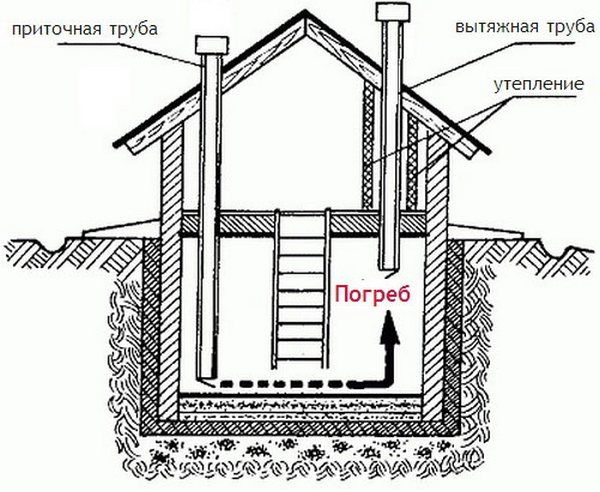

The role of the material for the ventilation pipe can be played by PVC, galvanized or asbestos. The main difficulty is choosing the right diameter, which is determined taking into account the area of the room. So, to make ventilation in the basement with an area of 10 sq. meters requires the installation of a pipe with a diameter of 20 cm. The calculation is made as follows. One "square" of the basement requires 26 square meters. see duct. It is known that there are 13 square meters for one centimeter of the product's diameter. see section. The final formula looks like for the calculation - the area of the room (S) * 26/13.
Correct ventilation of the cellar should provide:
- Extractor hood. The task of the duct is to remove old and heated air masses. The pipe must be installed under the cellar ceiling. The pipe is mounted vertically, and its upper part protrudes 0.5 m above the roof. To reduce humidity in the basement, its insulation is required. To solve this problem, a pipe of even larger diameter and a special insulation are used (the use of mineral wool is allowed). The principle of organization is simple. A thinner product is inserted into a thick tube, after which the space between them is filled with the mentioned material.
- Air supply. The ventilation device in the cellar implies the use of another pipe designed to supply clean air masses from the outside. Installation is carried out in the corner opposite to the place where the exhaust duct is installed. The bottom of the pipe should be 0.5 m from the floor. To avoid the penetration of various animals into the system, there should be a grid at the entrance.
The ventilation of the cellar in winter and summer works due to the temperature difference. In order to achieve an ideal replacement of air masses, the installation of special valves is recommended. Otherwise, drafts may appear or, conversely, the air movement may stop (at high and low temperature differences, respectively).
To check the functioning of the ventilation, you need to take a piece of paper and attach it to the outlet of the ventilation pipe. The presence of fluctuations indicates that the system is operating normally. There is another verification option. You can put a container with coals and pay attention to where the smoke comes out. If the ventilation of the cellar is done correctly, the smoke will escape through the exhaust duct.
When setting up the supply and exhaust system, you can do the following:
- Adjust the dampers to optimize air exchange.
- Increase the diameter of the duct.
- Make a combined ventilation option (using a fan).
How the ventilation system works
Optimization and quality of ventilation depend on the correctness of its arrangement. The scheme of the correct operation of the air exchange system is simple.The space in the basement provides for 2 ducts of the supply and exhaust structure. Through one - fresh air enters the room, through the other vapors are removed from the cellar. When the underground storage has a small area, air exchange is created in the cellar with one pipe. But the efficiency of a single channel system will be low.
Proper ventilation of the cellar is characterized by the following factors:
- maximum performance indicators are achieved due to the supplied risers of a certain diameter to the holes;
- the quality of the system is determined by the location of the exhaust and inlet openings above the basement;
- cellar ventilation pipes are mounted into the walls if the basement is located under the garage or under the house, or through the ceiling if the storage is located outside;
- when building a hood for a cellar with your own hands, you need to take into account the installation height of the inlet and outlet channels from the floor;
- the hole diameter must be the same on all channels. Too small - leads to musty air, and vice versa, the arrival of a large amount of cold leads to icing of food;
- the ventilation device in the cellar involves the installation of supply and output risers on opposite corners or walls. A certain distance is required between the pipes. This arrangement ensures the maximum passage of fresh air through the room, pushing out stagnant air;
- openings for the outlet of stagnant air are made under the ceiling;
- the ventilation exhaust duct is located above the basement embankment. Its length, for the normal functioning of the duct system, must be at least 150 cm:
- to organize the ventilation of the subfloor, PVC pipes of the same diameter are used;
- when arranging a supply and exhaust structure, it is necessary to achieve a direct location of communications. Bends and turns obstruct the passage of air;
- to maintain an optimal microclimate in the basement, it is recommended to install dampers. In the cold season, they regulate the flow of cold air;
- sections of the air circulation channels outside are covered with a grill, mushrooms and must be insulated.
Guided by the above tips for arranging ventilation in the cellar, you can achieve optimal ventilation of the underground storage.
Do-it-yourself cellar ventilation in the garage
Most modern garages are equipped with cellars, where it is customary to store various products, vegetables, pickles, etc. In the event that the basement is not arranged correctly, the products will quickly deteriorate, and this requires a high-quality ventilation system in the garage cellar.
When the hood in the cellar does not provide a full-fledged air exchange, the walls begin to get damp, mold and cracks appear. To avoid such problems, it is impossible to save on the organization of ventilation of the cellar during the construction process.
Varieties of supply and exhaust air exchange system in basements
Depending on the layout and area of the subfloor, the type of hood is selected. There are several types of air exchange system in basements.
Natural ventilation
The extraction device in the cellar by the type of natural ventilation is based on the difference in temperature indicators and pressure outside and inside the room. Performance depends on the correct hole positioning The supply duct is placed at a height of 25-30 cm from the floor, and the exhaust duct is 10-20 cm from the ceiling.
Forced system
The forced air exchange design consists of two pipes with built-in fans that make the air move, creating artificial vacuum in the room. Their capacity depends on the size of the basement.
Combined ventilation
When creating air exchange inside the subfloor, when choosing hoods, it is necessary to take into account the peculiarities of the construction.It can be located under a residential building or a garage, located separately on the street. These factors affect the correct duct capacity.
Advantages and disadvantages
Let's note the positive aspects from the use of ventilation systems in the basement and basement:
- Comfortable microclimate in the house, no feeling of dampness on the ground floor;
- Possibility to equip a pantrywhich maintains a constant temperature and moisture content in the air;
- The service life of the supporting structures is increased a dwelling house or cellar, especially if they are made of wood;
- Operation of gas and heating equipment is not possible in an unventilated room for safety reasons;
- A dry basement will never develop mold sporescausing ARVI, allergies and asthma.
All types of ventilation are divided into several types, depending on its purpose, the complexity of the arrangement and the principle of operation. But the principle of operation of any of them will be based on the laws of physics about the movement of air masses. Cold air goes down, and warm air goes up.
Natural fresh air ventilation
The simplest, system of vents in the foundation or plinth. It is equipped during the construction phase of the house and consists of small holes in the upper part of the basement.
If the basement is below ground level, then the hood is equipped with plastic or asbestos-cement pipes with a diameter of 10-15 cm. They are removed above the surface to a height of 30 cm and covered with gratings from debris and rodents. This method is natural and depends on fluctuations in outdoor temperature, wind strength, humidity.


When calculating its throughput, 1/400 of the total area of the basement is taken - this is how we get the total area of all airflows.
Openings should be located on the leeward side, which is least prone to precipitation. Houses with complex foundations and located in low-lying areas can have up to one hole for every 3-4 meters. We close the air vents with grates from the outside.
This inexpensive option is well suited for ventilation of garages and non-residential basements or as a supplement to the main ventilation system.
Natural exhaust ventilation
Supply and exhaust type. For proper operation, you will need to install two ventilation pipes, and the supply and exhaust ventilation device looks like this.
- The first pipe is located under the very ceiling of the basement and is designed for the outflow of warm air. Place the chimney as high as possible, preferably at the level of the roof ridge. This is necessary to ensure good traction. The part of the pipe, which is located in the open air, must be insulated to prevent freezing in the winter and covered with a visor from precipitation.
- The second pipe for fresh air inflow is located at a height of 30-40 centimeters from floor level, and we place its entrance on the street a meter above the ground and cover it with a lattice. Convection will occur due to the temperature difference between the outside and basement air. Such a system will work most effectively when the supply ducts are separated on different sides of the basement.
Supply and exhaust ventilation with heat recovery
For the basement floor, in which permanent residence is planned, it is not enough to simply install a forced ventilation system. The room is necessarily insulated and waterproofed. The issue of heating and heating is also being resolved.
Increasingly, supply and exhaust with heat recovery is being built into such schemes.
Already well-heated air enters the exhaust pipe, and in order not to emit ready-made calories into the atmosphere, the air is passed through a special ceramic recuperator. As it heats up, it gives off heat to the fresh air. At the same time, the air flows do not cross.The efficiency of such a device is 50-90%, depending on the design of the heat exchanger. All heat recuperators are very reliable, do not require additional maintenance and can serve for decades.
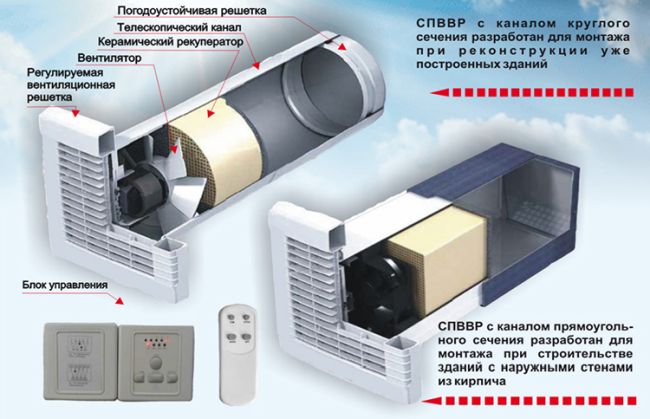

Equipped with moisture traps, dust filters, sensors that control humidity and air temperature. For residential premises, these indicators are in the range of 50-65% relative humidity and 18-220C. Such systems are most often found in "smart homes", and their installation is difficult and should only be carried out by professionals.
Ventilation system installation rules
Depending on the size of the basement, select a specific air circulation system:
- The natural system is only suitable for rooms up to 50 sq. m.
- Forced air exchange is rational with a cellar area of more than 50 sq. M.
The equipment of a high-quality ventilation system in the basement assumes compliance with the following rules:
- the cross-section of the supply and exhaust channels must be of the same size for uniform transportation of air masses. A larger diameter can only be at the exhaust line, in order to quickly remove air to the street. If the cross-section of the exhaust pipeline is less than the supply one, then conditions unfavorable for products and a person are formed;
- Do not install ventilation ducts close to each other, as in this case the air will not circulate throughout the room. Mount the pipes diagonally or opposite each other;
- install the lower part of the exhaust duct as close to the ceiling as possible to ensure high-quality air discharge and the absence of condensation accumulation on the walls and ceiling;
- good traction of the ventilation line is ensured due to the correct selection of the pipe length (at least 150 cm), which should rise above the soil level outside;
- for a small basement, use plastic sewer pipes as their diameter is suitable for efficient circulation
- if the cellar is located under a garage or an outbuilding, then use the entrance hatch as a ventilation shaft, equipping it with a frame with a grate from rodents;
- regardless of the location of the basement, the supply and exhaust lines should be as straight as possible with a minimum of turns and bends so that condensation does not accumulate;
- the entire line must be assembled from pipes of the same cross section. Expansion or narrowing of the channels is unacceptable;
- if the inlet is close to the ground, then it must be equipped with a mesh from the penetration of debris, insects, birds, rodents;
- it is better to equip the supply and exhaust pipes with special dampers to regulate the air movement in winter, in order to limit the ingress of cold streams and delay the removal of warm masses;
- use clamps to fasten the pipeline, securely fix all elements of the system during the installation process;
- install an umbrella or deflector on the ends of the pipes outside to prevent precipitation and debris from entering the basement;
- Insulate the outer parts of the pipes so that condensation does not appear on them in winter.
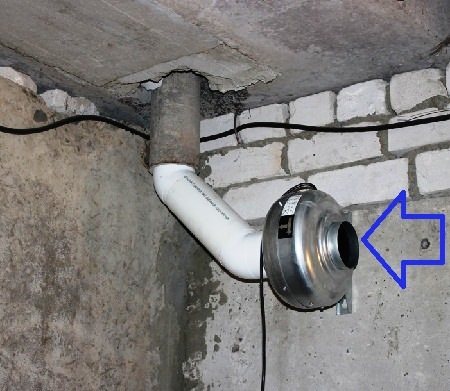

The independent execution of work on the installation of air circulation equipment in the basement requires preliminary calculations.
Basement requirements
As a rule, there is a basement in every private house. Many inhabitants of the private sector equip utility rooms, a cellar, arrange saunas, gyms, recreation rooms in it, which requires the arrangement of a complex forced ventilation system.
However, most often the basement is used to store food supplies, which, although they need a certain microclimate, do not require a forced draft device.
In this case, it will be enough to make natural supply and exhaust ventilation.
Nevertheless, in order to ensure the safety of products and the correct functioning of the cellar, it is necessary to adhere to some rules in the arrangement of this room.
Let's consider them in more detail:
- Exclude natural light from entering the basement... There should be no windows in the basement, periodic use of electric lighting is allowed.
- Organize a favorable temperature regime. For this, the cellar is equipped in such a way that one of its sides is in contact with the outer wall of the house.
- Ensure normal air exchange in the room, which is ensured by the presence of ventilation.
- Maintain the required room humidity... The optimal indicator is about 90%. This parameter also depends on ventilation.
- Arrange good waterproofingto prevent the ingress of groundwater into the cellar.
From the above list of requirements for the correct arrangement of the basement, it can be seen that two of the five necessary conditions are provided by ventilation.
But in order for it to function effectively and create an optimal mode for storing food, certain rules for its installation must be observed.
Insufficient ventilation of the room leads to an increase in humidity and the formation of mold, excessive ventilation can cause excessive dryness of the basement, which will also adversely affect the safety of the crop.
Therefore, here you need to adhere to the rule of the golden mean, but in order to comply with it, it is important to make the correct calculations, which depend on the size and characteristics of the room.
Forced ventilation
If you still have not managed to achieve sufficient air circulation in the basement even after carrying out such sophisticated manipulations, you should not be particularly upset. You can call on the help of the ubiquitous technical progress and provide your basement or cellar with a forced ventilation system. And, of course, do it all with your own hands. It is enough to make a small box and place an exhaust fan there.
It is not expensive and your expenses will probably be justified. Electrical connection is not difficult. Anyone can do it with their own hands. Just before connecting, do not forget to disconnect the internal network in order to avoid meeting with saints.
Fan for forced ventilation of the cellar
In general, there are a lot of options for the location of pipes with this ventilation scheme. For example, in garages, if there are basements in them, the chimney, as a rule, runs inside the room. In an old private sector, if there is a cellar, we can see only two pipes sticking out of the ground. In elite houses, you can spend hours figuring out complex circuits and wondering about the delights of bourgeois automation for ventilation systems.
Cellar ventilation system
Whatever it is, the main thing is that your basement or cellar is always dry and light. And it is quite possible to do this with your own hands, the main thing is to have a little hard work and imagination. By the way, your family members, who sooner or later get tired of visiting a dark and damp basement, may well add to your labor enthusiasm.
Forced ventilation of the cellar
A gardener's dream is to have his own spacious and dry basement for storing vegetables from the garden, conservation and other household items. How to make the ventilation of a home cellar technologically correct? To equip a good storage in a private house, it is necessary to equip it with a supply and exhaust air exchanger. Competent hood in the cellar will ensure optimal humidity and temperature conditions.
How much does it cost to make ventilation
It is inexpensive to provide a good microclimate in the basement. Simple options can be made from construction waste and scrap materials, more complex ones will require additional investments.
The following factors will affect the cost of the entire system:
- Basement area and the height of the entire building. According to these parameters, the number and size of air ducts are calculated, which will constitute a significant part in the entire project;
- Air box material. PVC is cheaper, but has restrictions on the size and maximum diameter of the pipe. Galvanized steel is more reliable and allows you to perform ventilation of any degree of complexity and configuration, but it is much more expensive, heavier and may require special equipment;
- The degree of automation (a simple duct fan costs from 2,000 rubles, a switch from 1,400 rubles);
- The presence of complex and expensive additional devices - split systems, recuperators, dehumidifiers, hygrometers and sensors (the cost of such a turnkey system can exceed 100 thousand rubles);
Basement ventilation is important both for the preservation of food stored there and for the well-being of the entire home. The simplest options can be made independently or laid down during the construction phase. More complex types of ventilation will require special skills and experience. In any case, this system must always be in good working order and timely serviced.



